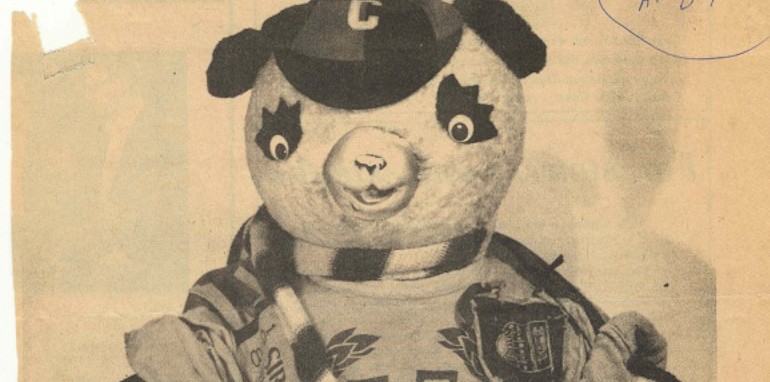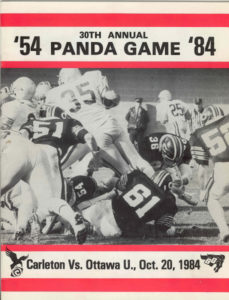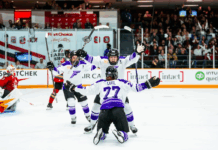
You might not know it, but there’s a tradition that lies dormant under the rubble of Ottawa’s Lansdowne Park.
Once a year between 1955 and 1998, students, alumni, friends and family packed inside the once-prolific stadium to bear witness to a pigskin contest between the Carleton Ravens and University of Ottawa Gee-Gees.
What was once just another game on the schedule at the beginning of the season soon reached an almost playoff-like feel, and the fans in the stands and the rumble on the field resembled more of a national title match than a homecoming game.
It marked the first and last time in history that an entire city’s attention was on a little stuffed panda named Pedro, the game’s trophy. This object became the heart of what is now history reborn: the Panda Game.
When Brian McNulty, who was the associate editor of the University of Ottawa student newspaper the Fulcrum, set up a prank—which included a jewelry store, the Gee-Gees’ stuffed panda mascot, and a pre-arranged heist—he could not have known he was creating what would become a beloved city-wide sporting event.
Jack Snow, a local Sparks Street jeweller, agreed to let McNulty stage the heist in 1955, and displayed the panda in his shop window. Newspapers and police reported the theft, although they were in on the hoax. McNulty hoped to create a rivalry between the two schools and of course, that’s how it started.
After the first “Pandanapping,” the two schools met on Thanksgiving Monday at Lansowne every year to determine the protectorate of the bear until the following year.
The teams split the first four games and Pedro spent time at both schools. The rivalry carried on in similar fashion until 1998, when the last owner of Pedro was decided, perhaps fittingly, to be the Gee-Gees, by a score of 59-17.
Every person had a different experience of what the Panda meant, from the students, to the athletes, to the coaching staff. For John Pratt and Noris Bot, who both studied at Carleton in the late 1970s, the Panda Game was the “highlight of the year.”
By then, the tradition had reached its peak, and the event, deemed a “grudge match,” took place on a Saturday afternoon.
Even before the 1970s the city expected a stellar grudge match. On Oct. 11, 1957, back when the Charlatan was the Carleton, writer Dan O’Connor wrote, “Thanksgiving Day’s annual grudge match . . . been termed the game of the year in some circles.”
In their day, Pratt and Bot remember long afternoons, girls being passed overhead in the stands, indecent posters directed towards the Gee-Gees fans, and a Carleton song, evidently lost on today’s less-than-creative sports fans.
During the fall contest of 1977, five pigs burst out onto the field, in Carleton garb, and marked the year of the Carleton “pork chops.”
Fifteen thousand attendees was an average turnout until the late 1980s, when the fire that the tradition had seen in earlier years began to fade. Even the Ottawa Rough Riders could boast that number, garnering 20,000 fans of their own accord.
Thomas Timlin, a defensive-back who played for the Ravens from 1981-85, and now Carleton’s director of football operations, has a similar idea of what the game meant to him. He witnessed the community unite in his years. As a part of a Ravens club that he explained was less-than-competitive, having a game as critical as the Panda Game, provided a chance to compete in playoff fashion.
“It was definitely something more,” Timlin said. “Having a cross-town rival, there’s a lot of emotion there.”
Now, in Lansdowne Park, the rubble and the memories await reconstruction. Steve Sumarah is the man who has been chosen not only to lead a group of Carleton athletes back to the football field, but also to acquaint them with the return of a little stuffed panda named Pedro.
“I can tell you that the buzz in the city is as much that we’re back as it is about the Panda Game returning,” Sumarah said.
He too has an idea of what the Panda Game means to him.
“The people have changed, the names have changed, but the helmet names haven’t, and that’s all that people care about.”






